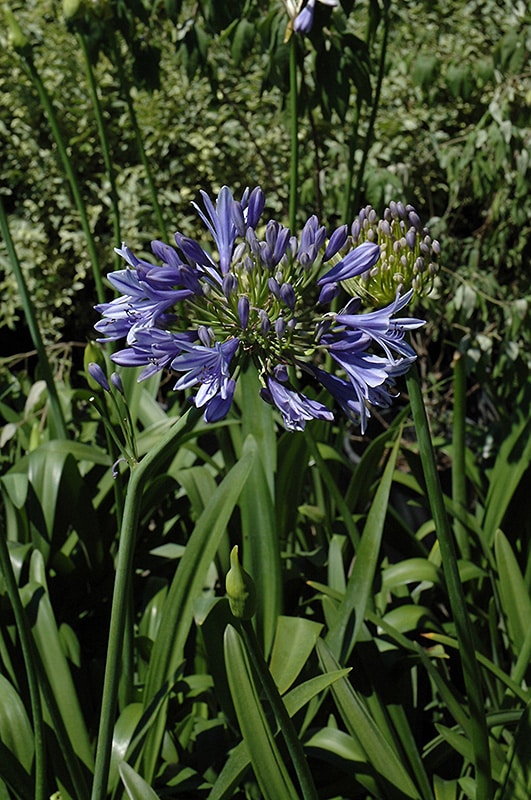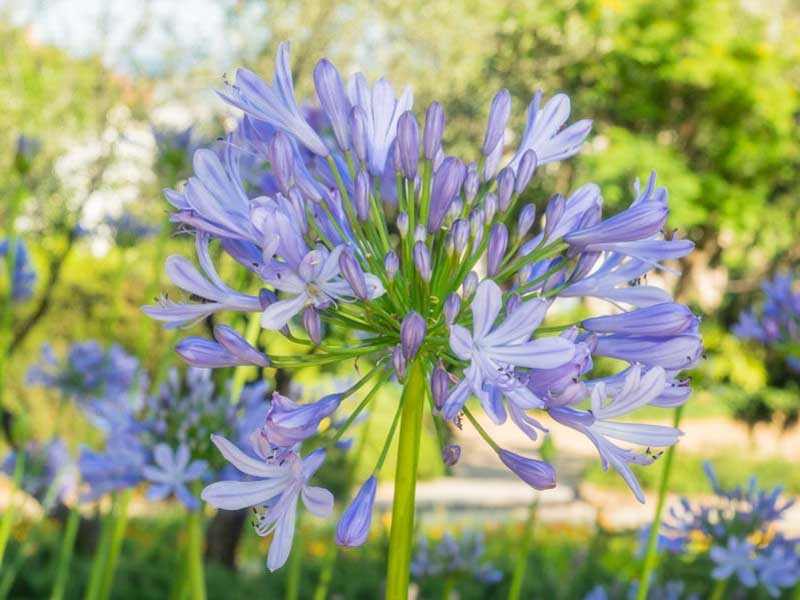Agapanthus Care Tips for Lush and Vibrant Flowers
Wiki Article
Mastering the Art of Agapanthus Treatment: Necessary Steps for Healthy And Balanced Growth and Vibrant Blooms
In the world of horticulture, the farming of agapanthus stands as a gratifying endeavor for those that look for to support these elegant flowering plants. From selecting the right variety to grasping trimming techniques, the trip in the direction of cultivating prospering agapanthus plants is multifaceted and holds the vital to unlocking the complete potential of these organic treasures.
Selecting the Right Agapanthus Range

When picking the best Agapanthus variety for your yard, consider variables such as climate viability, bloom shade, and growth practice. Agapanthus, frequently referred to as Lily of the Nile or African lily, comes in a variety of colors ranging from shades of blue and purple to white. Pick a bloom color that matches your existing yard palette to create a harmonious landscape. Additionally, consider the climate in your area to guarantee the Agapanthus range you select can thrive in your details problems. Some ranges are much more tolerant of cool temperatures, while others favor warmer environments. Comprehending the development practice of various Agapanthus varieties is critical for proper positioning within your garden. Some varieties have a clumping growth practice, ideal for containers or boundaries, while others have a more spreading nature, appropriate for ground cover or mass growings. By meticulously evaluating these aspects, you can select the perfect Agapanthus range to improve the beauty of your garden.
Ideal Growing Conditions
Thinking about the ideal environmental requirements is important for successful Agapanthus farming. Agapanthus plants are sensitive to chilly temperature levels and must be protected from frost during winter months.To guarantee healthy and balanced development and vibrant blossoms, plant Agapanthus bulbs at a deepness of regarding 2-4 inches and area them 8-12 inches apart. Including raw material, such as garden compost, to the dirt can enhance drainage and fertility, advertising robust root growth. Mulching around the base of the plants assists keep dampness and subdues weed development. Normal watering is crucial, especially during the expanding period, to keep the soil continually moist but not waterlogged.
Watering and Feeding Tips
Maintaining proper dampness levels and supplying essential nutrients are crucial elements in the treatment program for Agapanthus plants. It is essential to strike an equilibrium when it comes to watering Agapanthus. If overwatered, these plants choose consistently wet dirt but are prone to root rot. Throughout the growing period, water deeply when a week, ensuring the dirt is well-draining to avoid waterlogging. In hotter climates or during periods of dry spell, even more frequent watering may be required to maintain the dirt equally wet. Nevertheless, decrease watering in the winter months to stop water logged conditions.Feeding Agapanthus is vital for promoting healthy and balanced development and prolific blooms. Use a balanced plant food, such as a 10-10-10 formula, in the very early springtime as new growth arises. Repeat this application every 6-8 weeks throughout the growing period. Prevent too much fertilization, as it can bring about lush foliage at the expense of flowers. Constantly comply with the maker's guidelines for why not find out more proper dilution and application methods. By following these watering and fertilizing ideas, you can guarantee your Agapanthus plants grow and produce vivid, lasting blossoms.
Trimming Techniques for Agapanthus
Trimming Agapanthus plants at the proper times and with proper techniques is essential for preserving their health and wellness and promoting optimum development and flowering. The ideal time to prune Agapanthus is in late wintertime or very early spring before new development emerges. Start by removing any type of dead or yellowing leaves near the base of the plant. Cut them as close to the ground as feasible without damaging the arising shoots.Deadheading invested blossoms can also redirect the plant's power into producing more blossoms instead than establishing seeds. If you want to collect seeds for propagation, leave some flowers to completely dry and fully grown on the plant.
Remember to make use of clean, sharp tools to make precise cuts and reduce the risk of introducing diseases. Agapanthus. Regular pruning will certainly assist keep your Agapanthus looking healthy and balanced and cool while making certain a plentiful display screen of gorgeous blooms
Managing Typical Insects and Conditions
After ensuring correct pruning methods for Agapanthus, it is important to attend to common bugs and illness that can affect the health and vitality of these plants. Agapanthus plants are generally durable yet can still fall sufferer to certain issues. One typical parasite that influences Agapanthus is the Agapanthus gall midget. This little, orange fly lays its eggs in the vegetation, causing altered development and blossom buds that fail to open. To battle this bug, trim and destroy any kind of affected plant parts and consider making use of insecticidal soap.In addition, Agapanthus plants can experience from origin rot if they are planted in inadequately draining dirt. By being watchful and taking timely action against conditions and pests, you can help your Agapanthus plants thrive and create vivid blossoms. Agapanthus.

Conclusion
In final thought, mastering the art of agapanthus care involves picking this article the best variety, providing perfect planting problems, correct watering and feeding, suitable trimming techniques, and resolving typical pests and conditions. By adhering to these necessary actions, you can make sure healthy development and dynamic blossoms for your agapanthus plants. Remember to regularly check and maintain your plants to advertise their overall well-being and longevity.To make certain healthy development and vivid flowers, plant Agapanthus light bulbs at a depth of about 2-4 inches and space them 8-12 inches apart. By adhering to these watering and fertilizing pointers, you can ensure your Get More Information Agapanthus plants grow and produce dynamic, resilient flowers.
One common pest that impacts Agapanthus is the Agapanthus gall midge. In addition, Agapanthus plants can experience from origin rot if they are grown in badly draining soil. By complying with these crucial actions, you can guarantee healthy and balanced growth and vivid flowers for your agapanthus plants.
Report this wiki page